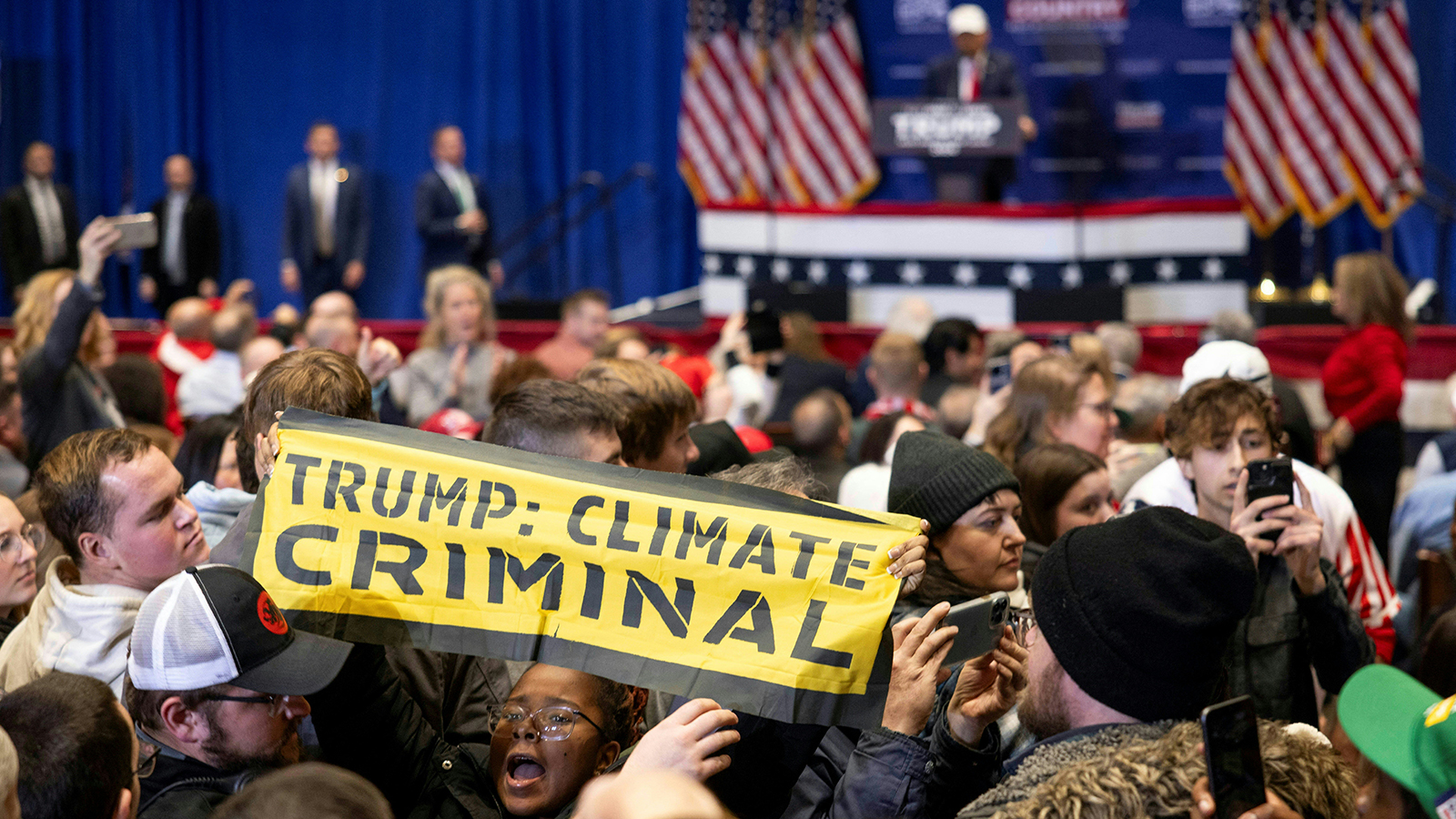For those who worry about climate change all the time, the results of the November election seemed to send a clear message: American voters just don’t care as much as you do.
But even though President-elect Donald Trump took the popular vote while pledging to roll back the country’s landmark climate legislation, the overall results present a more complicated message. Exit polls show more Americans than ever prioritized climate change. And in several battleground states that backed Trump, Democratic senators who ran on environmental platforms also won their races. Across the country — in blue and red states alike — environmental ballot measures prevailed. So what exactly happened to the climate vote?
“There’s no question that, at the presidential level, climate was not on the ballot,” said Pete Maysmith, senior vice president of campaigns at the League of Conservation Voters, an environmental nonprofit. “Voters are complex,” he said. “The economy really overrode a lot of other issues at play.”
Climate change was largely absent from this presidential election, with both Kamala Harris and Donald Trump remaining relatively quiet on the subject. The National Election Pool, the country’s largest exit polling consortium, didn’t include a question about the subject in its survey. But the second largest — a collaboration between Fox News and the Associated Press — did. When asked what they viewed as the most important issue facing the country, 7 percent of voters said climate change, a near doubling of climate concern since 2020, placing it as the fifth-most chosen issue out of the nine listed.
“This data shows that climate voters are wielding more political power than ever before, even though it’s still not nearly enough,” said Nathaniel Stinnett, the founder and executive director of the Environmental Voter Project, a nonprofit that tries to persuade environmentalists to get to the polls. Among the share of voters who consider climate change their top issue, the vast majority chose Harris — breaking harder for her than any other constituency did for any other candidate. Some 9 percent of them chose Trump.
An advocacy group’s message is seen displayed on a residential lawn in Michigan in November 2024.
Izzy Ross / Grist
But while climate change may not be a top issue for the majority of Americans, that doesn’t mean they don’t care. Environmental initiatives triumphed across the map: In California, for example, voters sent $10 billion toward climate prevention and resilience. In Washington state, a ballot measure to repeal the state’s landmark Climate Commitment Act, which created a cap-and-invest program, resoundingly failed. In Louisiana and South Carolina, places that Trump won handily, nature conservation funding initiatives got the public’s stamp of approval.
“Broadly speaking, large majorities of Americans want to take action on climate change, but it is a high priority for very, very few voters,” Stinnett said. “We saw that bear out in a lot of ballot initiatives, because when voters are presented with a binary choice, you either vote for climate leadership or you vote against it.”
While other issues — like the economy, abortion, and immigration — appeared to guide Americans in their vote for president, downballot candidates seemed to benefit from voters’ climate concerns in battleground states that swung to Trump, such as Arizona, Nevada, Wisconsin, and Michigan. Exit polls show that at least three incoming Democratic senators — Arizona’s Ruben Gallego, Nevada’s Jacky Rosen, and Wisconsin’s Tammy Baldwin — won more than 90 percent of the votes of voters who prioritize climate change.
Early voting gave another clue to where the climate vote went in these states. In Arizona and Nevada, environmentalists turned out in numbers large enough to boost Democratic candidates to slim margins of victory. Gallego gained his Senate seat by roughly 80,000 votes — a fifth of the number of early ballots cast by voters who prioritize environmental issues, according to data provided by the Environmental Voter Project. In Nevada, the organization found a similar ratio between early climate-first voters and the number of votes Rosen won by.

Democratic senator-elect Elissa Slotkin speaks at a rally hosted by Democratic presidential nominee, U.S. Vice President Kamala Harris on Michigan State University campus two days before the 2024 election.
Scott Olson / Getty Images
And in Michigan, which Trump took by a slim margin, economic anxieties collided with climate action. There, Democrat Elissa Slotkin squeaked out a victory for a Senate seat over the Republican Mike Rogers, who campaigned against Slotkin’s support of the state’s burgeoning electric vehicle industry, spending tens of millions of dollars on attack ads.
“There are going to be political consequences if you mess with people’s livelihoods,” said Lori Lodes, the executive director of Climate Power, an advocacy group. Lodes believes a shift to clean energy technology, like EVs, will continue — even in red states, which have benefited more from Inflation Reduction Act funding than blue ones. “Democrats and Republicans know first hand the impact of these investments on their communities,” she said.
There’s evidence and precedent to suggest that climate progress will continue, regardless of the presidential election outcome. Some 28 percent of the roughly 400 state-level bills to reduce carbon emissions from 2015 to 2020 — encompassing the years that Trump was last in office — passed through Republican-controlled legislatures. And this summer, 18 House Republicans signed a letter against rolling back clean energy tax credits in the Inflation Reduction Act. Exit polling showed that 24 percent of voters who support the expansion of clean energy alternatives to oil and gas also chose Trump.
“Long term durable climate progress has to be bipartisan,” said David Kieve, president of Environmental Defense Fund Action, an organization that supports environmentalist candidates, including Republicans friendly to their mission. “I don’t think we can continue to operate in the really divided, fractured way we have in recent years.”

